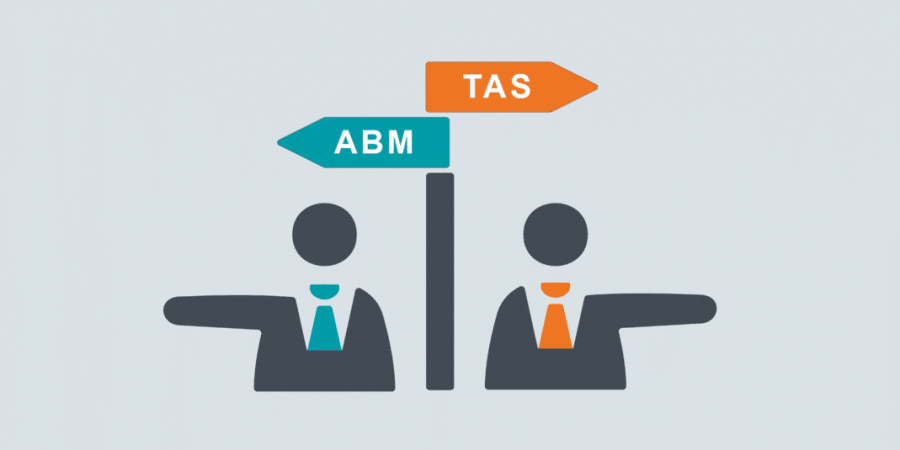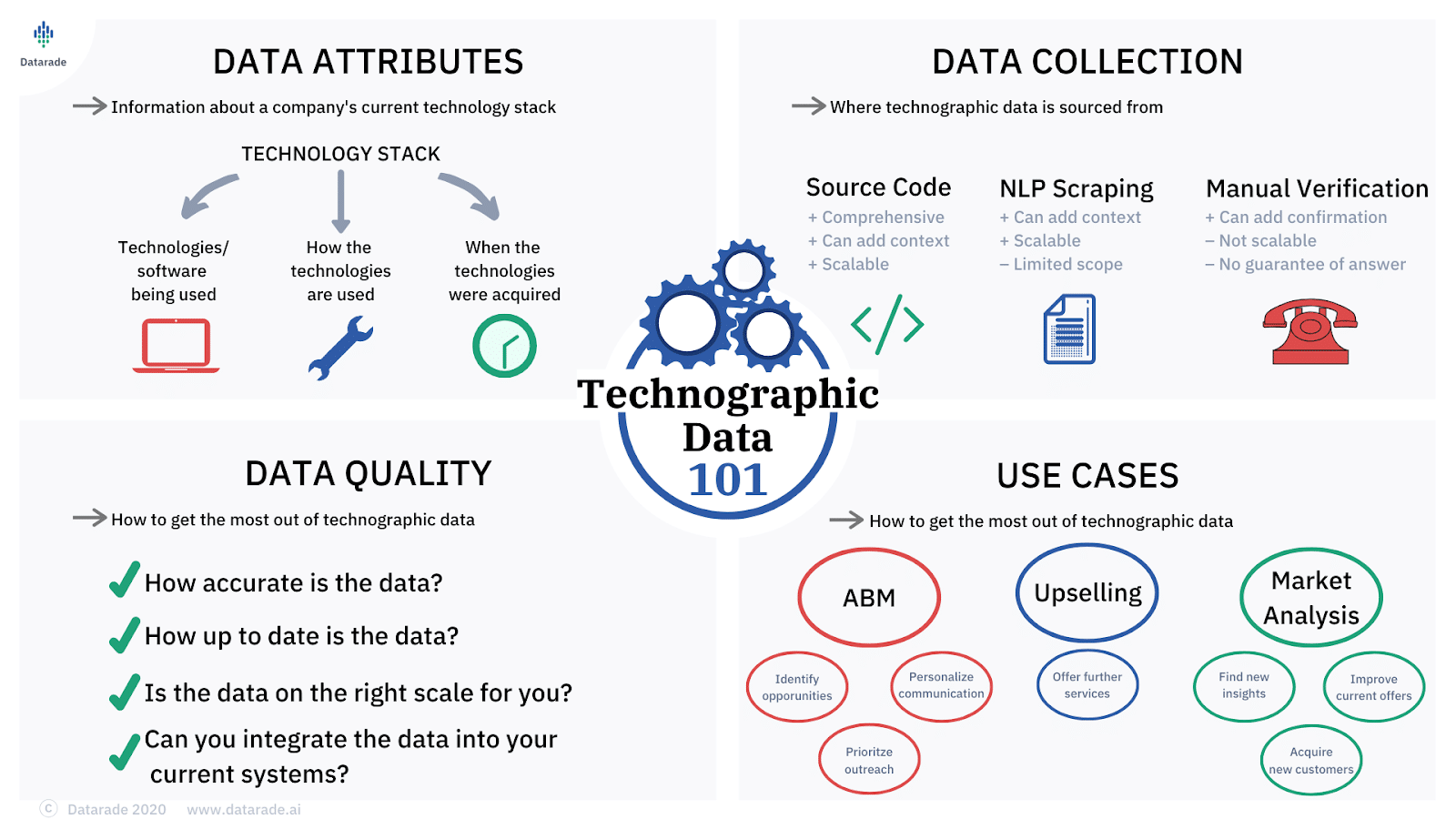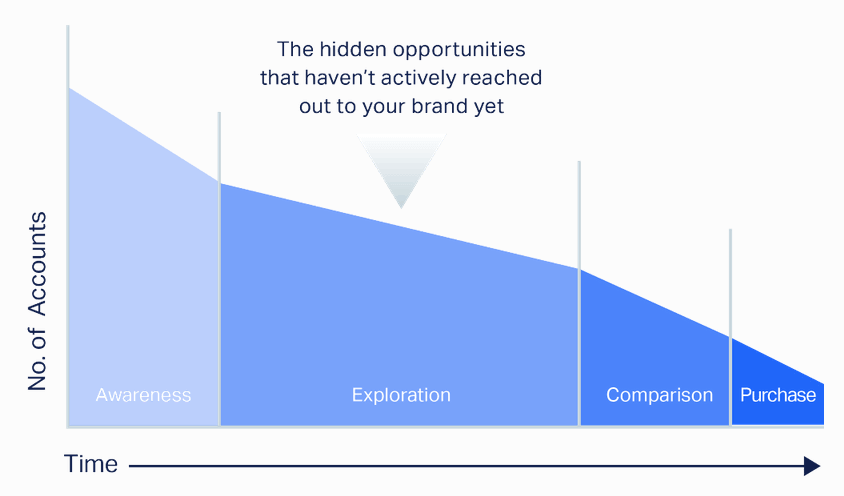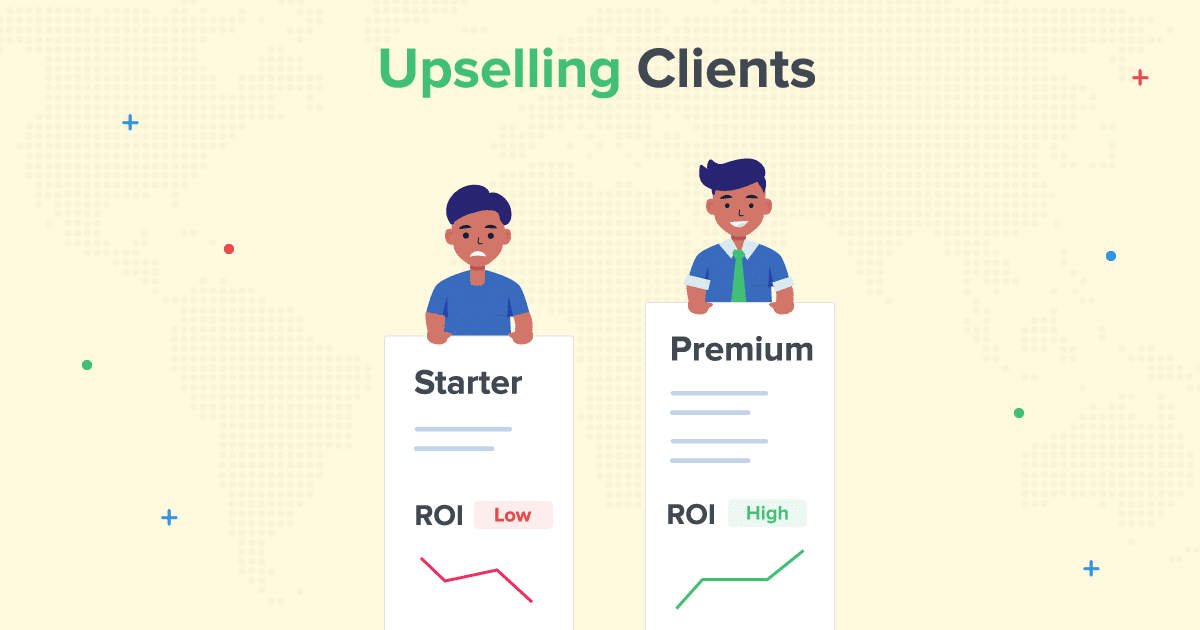Target Account Selling: Is This Another Buzzword for ABM?
There are various strategies to market and sell your product. You could go the inbound route where leads come to you and you qualify them. You could go through the outbound route where you reach out to companies and sell to those who show interest. The approach you need to use greatly depends on your products and services. For B2B businesses who sell high ticket deals, a targeted selling approach can help them reach to customers who are already a good fit for them. This approach needs to be a repeatable process. This will allow a firm to scale up quickly and maximize returns on investment. The approach is called “Target Account Selling”.
But, how do you set up Target Account Selling? Is it the same as Account-Based Marketing? In this article, we will cover everything you need to know.
What is Target Account Selling?
Target account selling (TAS), is a B2B sales approach where a set of highly qualified accounts and key decision-makers from those accounts are targeted by building a personalized, customer-centric relationship with them.
The focus with target account selling is to have multiple points of contact within a firm, i.e. with all its decision-makers. A good understanding of the target account and knowing the preferences of its decision-makers is important for target account selling to work.
To accomplish this, a firm will need account data, a lot of it. The more personalized the experiences of the key decision-makers are, the higher are your chances of converting them while maximizing customer lifetime value.
Now, moving on to the most obvious question. Isn’t it the same as ABM? Yes, kindof, it is the approach to things that is the same. However, the outcome they produce is completely different.
Let us check how Account-Based Marketing holds up against Target Account Selling.
Target Account Selling vs Account-Based Marketing
Let’s start with the basics. Target Account Selling is a sales strategy whereas account-based marketing is a marketing strategy. The approach these two methods employ is nearly identical. The difference is in the outcome they produce.
You could say that account-based marketing is a soft technique. Its main focus is to build and maintain good relations with key decision-makers of a target account. The sales comes later.
Whereas, target account selling focuses on generating a sale by converting the target account. The approach employed by TAS is similar but produces a different outcome.
TAS and ABM can be used in tandem with one another to amplify revenue growth. As they have the same set of requirements, you can run the other if you’re already running one of them.
What Makes Target Account Selling So Effective?
Target account selling is complex to set up. It requires more resources than a regular sales-based approach. However, it delivers consistent conversions along with other added benefits.
Moreover, this targeted approach is very well suited for B2B businesses. Let us consider each attribute that makes target account selling so effective.
Stronger Customer Relationships
Building a strong relationship with your account is at the core of target account selling. The relationship is nurtured with personalized content, customized solutions, and robust tech support to ensure the relationship is long-lasting and meaningful.
This approach instills trust among the key decision-makers of an account. They’re easily convinced about the value in your offerings and confident in the solution you’re providing. Thus, they’re more than likely to convert and make a purchase.
Quicker Sales Cycles For Qualified Accounts
The targeted approach means you’re only targeting firms that match your ICP and are likely to buy. This means less time is spent pursuing irrelevant leads. Moreover, a lot of data is utilized to select and target accounts. Only highly qualified accounts will enter the funnel.
Target account selling enjoys a higher percentage of conversions when compared to the regular sales-based approach. This makes it more productive and efficient.
While complex to set up, you will be focusing only on leads that are highly qualified and more likely to convert. This will enable you to have quicker sales cycles, making the entire sales process lean and consistent at delivering results.
Stronger Brand Reach and Reputation
The B2B market is huge in terms of value but when you consider its size in terms of numbers, it pales in comparison to the B2C market. However, this has its benefits.
Consider the points mentioned above. Target account selling enables you to vastly improve customer relationships, experience, and level of satisfaction. All these gains don’t just translate into revenue growth and higher margins.
It will enhance your brand’s reach and reputation in the B2B sector as more people will find out about how good the experience is when doing business with you.
Creates Brand Advocates
Existing customers who act as brand advocates are your strongest marketing asset when it comes to B2B marketing. The above-stated points make it clear how target account selling ensures that your customers are satisfied and happy with your products/services.
The thing about happy customers is that they narrate their experiences to other people, mostly within their industry. When other executives from the same industry come across such positive mentions about a brand and its offerings, they consider that brand for the similar requirements they might have. Thus, existing customers become a more credible source of marketing when they talk positively about your brand.
How To Model and Define Target Account?
To create an effective target account list you need to get answers to a few questions. Who are my ideal customers? Are they the best fit? How well do my offerings suit them? How eager are they to make a purchase?
The following steps will help you get answers to those questions.
Create an Ideal Customer Profile
Every firm must have an Ideal Customer Profile. Running your marketing and sales based on an ICP will bring tremendous productivity and efficiency gains.
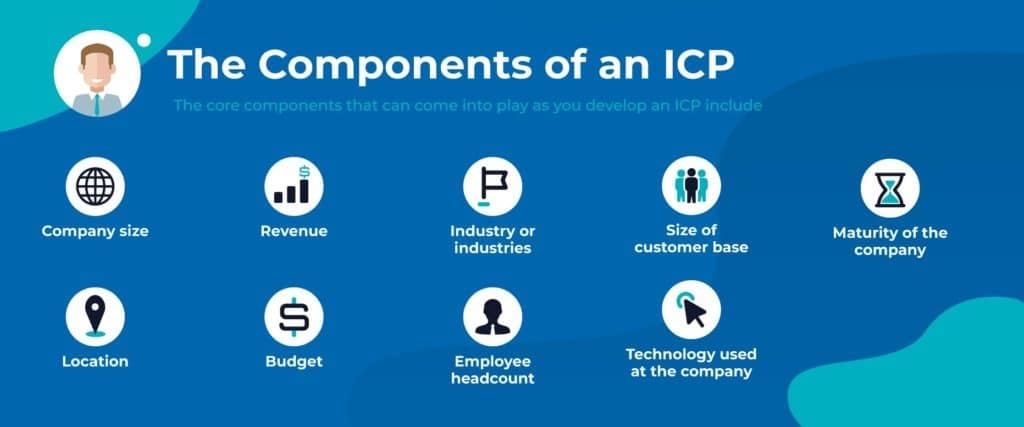
Source: Jumpcrew
You can use external and internal data sources for creating an ideal customer profile. An ICP will act as your primary filter. With it, you’ll be left with a pool of leads that resemble a firm that stands to benefit the most from your offerings.
Use Firmographic and Technographic Data
Knowing who your ideal customer is helps but for a targeted approach like TAS, you need more filtering. TAS aims to only target leads that are highly qualified and most likely to convert.
To achieve this, utilize firmographic and technographic data. Screening leads using this data will leave you with leads that are high-quality and high-value.
Knowing what technologies they use will further filter out leads. You’ll be left with a pool of leads that use technologies that your offerings complement or make their existing setup easier to run and maintain.
Leverage Intent Data
Historical data will only get you close to your goals. If you want to achieve them you will have to make use of real-time data.
The steps mentioned before will tell you which firms are the best match, but they won’t tell you if they’re in the market searching for a solution. For that, you need Intent Data.
Intent data allows you to identify leads that are in the market and seek the form of a solution that your firm provides. So now you have a pool of leads that are the best match and looking to make a purchase. Targeting them will ensure the highest chances of conversion.
Upselling to Existing Clients
The whole premise of target account selling is based on building and maintaining long-term relationships with your existing customers. This gives you a big strategic advantage.
Consider this, your customers are happy and satisfied with your products. They have a positive relationship with you, trust you, and are confident in your offerings. All of this makes it easy for you to upsell your products to them.
It is not only effective but highly cost-efficient. How much exactly? It is 4 times cheaper to upsell an existing customer than acquire a new one. And that is without adopting TAS. With TAS, the costs will only decrease further.
Conclusion
Target account selling is a focused approach that B2B businesses stand to tremendously benefit from. While it is data-intensive and complex to set up, the upsides of adopting it far outweigh the initial investment for B2B businesses targeting ACV deals.
The best part is perhaps how similar TAS and ABM are. They operated on the same data set. This means you can run ABM and TAS at the same time using the same resources.
Sell more, understand your customers’ journey for free!
Sales and Marketing teams spend millions of dollars to bring visitors to your website. But do you track your customer’s journey? Do you know who buys and why?
Around 8% of your website traffic will sign up on your lead forms. What happens to the other 92% of your traffic? Can you identify your visiting accounts? Can you engage and retarget your qualified visitors even if they are not identified?
